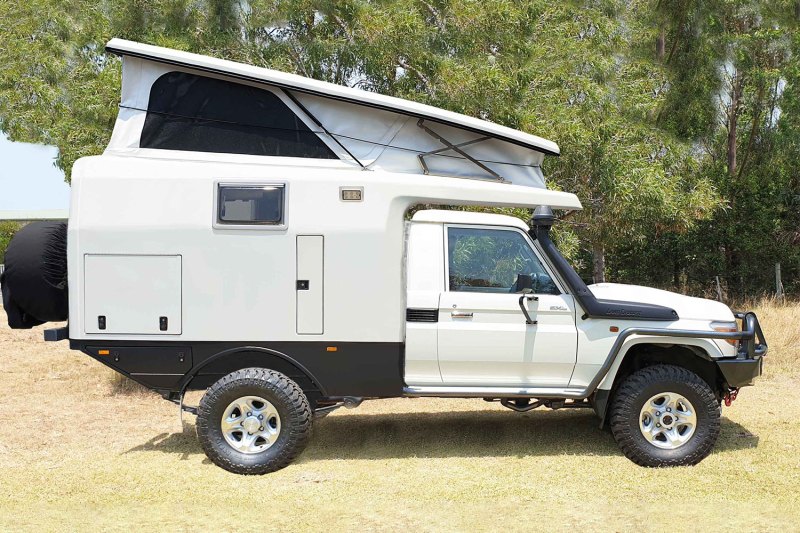Maybe it’s because large swaths of Australia are as inhospitable as the surface of Mars; or that every critter on the continent is poisonous, if not deadly; or that Mother Nature tries to burn much of it to the ground by wildfire every few years. Whatever the reason, the Aussies know how to make seriously rugged, apocalypse-worthy vehicles. The latest development from Australia-based Earthcruiser is no different.
Earthcruiser is world-renowned for its military-grade off-road vehicles. The Earthcruiser Extreme XTR is the company’s most compact overlanding truck yet. Every build starts with the already capable Toyota Land Cruiser pickup platform. Earthcruiser adds a V8 turbo diesel mated to a five-speed manual transmission (a six-speed auto is optional). Although the XTR tips the scales at more than nine thousand pounds, there’s no special license required to pilot it.

A long list of off-road-centric enhancements ensures the Extreme XTR is ready to go just about anywhere. Upgraded shock absorbers, differentials, and axles, plus larger leaf springs and a two-inch lift make it worthy of anything the Australian Outback can throw at it. The upgraded fuel tank carries more than 34 gallons of petrol, with the option to add a 29-gallon reserve. Integrated rear snatch points make for easy recovery in the unlikely event the XTR gets bogged down in sand, mud, or a raging river. Plus, beefier overlanding options include a bullbar, front and rear winches, and a central tire inflation & monitoring system.
Inside, the molded, one-piece living space is compact but full-featured with most of the comforts of home. Earthcruiser maximized the floorplan by incorporating the bed and sleeping quarters into the popup section. It’s difficult to believe, given its size, but there’s even a wet bathroom with a shower and a slide-out toilet. The built-in kitchenette includes a diesel-powered fridge, freezer, and range. With a diesel climate control system, the interior stays nice and comfortable, no matter what things look like outside. With clever rationing, the 21-gallon water tank is capable of keeping one camper hydrated and (mostly) clean for more than a week. The robust power system — including a 3,000-watt inverter, backed by a 400Ah lithium-ion battery pack and a 540-watt solar charger — is designed to power the Extreme XTR off-grid indefinitely.
There’s no official word on pricing, but it’s likely the Earthcruiser Extreme XTR will base around USD $150,000. The truck is now available for pre-order, and the company expects to start production in July 2020.
If size and money are no matter, check out our roundup of the world’s most extreme overland vehicles.



